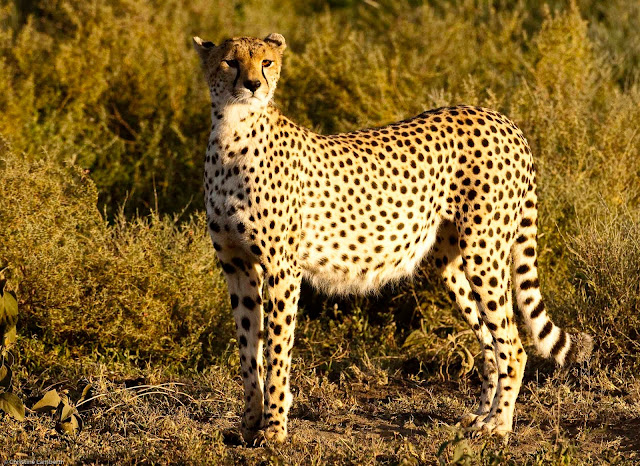ETOSHA NATIONAL PARK - A DAY AT A WATERHOLE
The wilderness of Africa is a shrinking concept in the face of an exponentially burgeoning human populace that is encroaching more and more into areas that for millennia have belonged only to the savagely wild and wonderful beasts that roam its plains. Reaching these now isolated pockets of wilderness means travel of thousands of kilometers for those wishing to share in its magic.
And so it is that after two days of travel I find myself sitting at the gates of Etosha National Park in Namibia. It is day five of a seven day sojourn that we decide the day will be well spent next to a waterhole for the whole day. We’re there just as soon after sunrise as we can muster and we settle down for the day.
The first very curious visitor to our vehicle is a Pied Crow who spends the day hopping from car to car looking for something to eat. Bets are on that he is regularly fed titbits from disobedient tourists!
The first visitors to the waterhole in large numbers are some very thirsty Zebras that stand kneedeep in the water to get their fill. Hot on their heels come the first elephant herd followed shortly after by another smaller herd, while in the distance a black rhino makes its appearance staying well away from the carpark at the edge of the waterhole.
Quiet reigns again for a nanosecond and the only photogenic subject turns out to be a rockscraper thrush that scratches in the grass looking for its daily sustenance. Hanging around on the western side of the waterhole a lone male springbok seems to be defending his bit of territory from other invading males.
By now, the sun is high in the sky and the shadows cast by the angle of the sun makes for very flat images but I cannot resist taking shots of the lone bull elephant who ambles towards the water intent on slaking his thirst.
Then, all goes quiet and we sit and discuss the value of sitting all day in the same place, but, we’ve committed ourselves and it would be foolish to give up half way through the exercise.
In the distance at the treeline, well back from the water we notice that the black rhino suddenly takes off as though he trod on a snake. We scan the bushes with binoculars but all we can observe is some long grass. The silence is interrupted by a vehicle that strictly speaking shouldn’t even be in a park like this - an overlander. Someone on the vehicle notices that we are intently scanning the bush and within seconds from her elevated viewpoint she spots the lioness. All we can see from our position is the occasional ear flicking between the golden tufts of grass. We wait.
The bus finally takes off obviously on a tight schedule and we are alone again at the waterhole. All is quiet and there are no more animals at the hole. Then, towards late afternoon our vigil is rewarded when two lionesses come warily down to the waterhole with six tiny cubs in tow. If we consider all we have studied on the behaviour of lions this would appear to be the first move for the cubs. They seem to be heading towards a large pride of lions that have taken up a territory on the edge of the Pan. Our speculation leads us to believe that these cubs are about to be introduced to the pride.
We watch as they come to the water’s edge and after a good long drink they come carefully walking past us watched by a long bull elephant still satisfying his thirst in the middle of the waterhole.
They move past us and then disappear into the long grass. Our vigil is rewarded and we end the day knowing that once again Africa has revealed one of its secrets to someone who is willing to watch and wait.












Comments